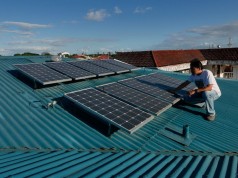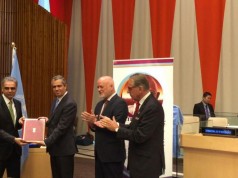 Nanotechnology, the manipulation of matter at the scale of atoms and molecules, seems to be the buzzword among the Indian public sector, private enterprises and the research community these days. Research is in top gear at over 100-odd companies in the public and private domain and there are 50 universities to harness the potential of this technology. Areas of applications with immediate impact could be seen in the areas of drug delivery to treat tumour or cancer, solar energy, display technologies, opto-electronic devices and semiconductor devices in nanoelectronics.
Nanotechnology, the manipulation of matter at the scale of atoms and molecules, seems to be the buzzword among the Indian public sector, private enterprises and the research community these days. Research is in top gear at over 100-odd companies in the public and private domain and there are 50 universities to harness the potential of this technology. Areas of applications with immediate impact could be seen in the areas of drug delivery to treat tumour or cancer, solar energy, display technologies, opto-electronic devices and semiconductor devices in nanoelectronics.
Research and development is in top gear at public sector major Bharat Heavy Electricals Ltd. (BHEL) in its endeavour to become an all-inclusive engineering enterprise. Aiding these initiatives is its R&D arm which is consolidating its knowledge base using emerging technologies such as nano materials. Nano science is one of those frontier technologies which is used across many verticals such as pharma, textiles, paints, cement etc and is primarily used for enhancement of capacities. It is now in power plants as well. Nano materials exhibit novel properties and its applications can be used in power systems and develop applications for product and systems. BHEL is setting up a dedicated facility, the Centre for Nano Technology, at its Corporate R&D centre in Hyderabad.
“With super-critical and ultra super-critical power projects being the order of the day, corporate R&D is working to set up a Centre of Excellence for frontier area of nanotechnology and centre for excellence in areas of machine dynamics, compressor and pumps,” says H. S. Jain, General Manager, BHEL. The Centre for Nano Technology is being developed at a cost of Rs. 8.27 crore, and it is expected to be functional by June 2011.
“In the wake of climate change, we are trying to reduce emissions from power plants. A beta testing is happening for a novel filter, for carbon dioxide and carbon monoxide using advanced nanotech,” says Jain.
Nano materials exhibit novel properties and its applications can be used in power systems and to develop applications for product and systems. This Centre would be focused on development of nano strengthened creep resistant steels, nano structured coatings, gas filters, catalysts and nano-doped insulating materials which are used in power plants. According to Jain, the entire R&D work is to impart ‘future ready’ status to BHEL in super-critical regime. Some of the other centres of excellence include a Centre of Excellence for Machine Dynamics in order to improve the capabilities development in the areas of rotating machine, condition monitoring and expert diagnostics thereby reducing vibration, noise, tribology, stress and strain.
Among others, the R&D unit of BHEL is developing and testing a 1 MVA power transformer designed with 77 K superconductors. The prototype transformer has been engineered and assembled for the first time in the country. The transformer featuring zero copper losses exhibits higher efficiency than conventional transformers. With this technology, the BHEL R&D unit has entered the era of applied superconductivity.
An IEC-61850 compliant Substation Automation System (SAS) and accessories, like Bay Control Units (BCU) and human machine interface have been developed by BHEL during this year. The SAS includes capabilities to execute substation control commands and monitor substation parameters from a remotely located Human Machine Interface (HMI). With the inter-operability of the new system, a complete SAS is in advanced stage of establishment and is expected to be operational with BHEL designed equipment at a transmission substation.
Having recorded the highest ever turnover of Rs. 34,050 crore, BHEL has spent Rs. 788 crore on R&D amounting to 2.3% of the company’s turnover. With this, the corporate R&D unit in Hyderabad has achieved Rs. 6,334 crore during 2009-10 through products and systems developed in-house as against Rs. 5,300 crore achieved last year. In fact, BHEL is one among the four Indian companies figuring in ‘The Global Innovation 1000’ to be ranked for its record expenditure on R&D. The R&D spend is expected to go up from the present level of 2% to 5% in the next four to five years.
Some of the other centres include the Centre of Excellence for Machine Dynamics which is being set up at a cost of Rs. 7.21 crore; the Centre of Excellence for Compressors and Pumps envisaging an investment of Rs. 9.90 crore and a Vacuum Chamber Spin Test Facility for Turbine Blades for developing new blades of indigenous design for super critical applications.
Further, the corporate R&D has developed a customised software module called Tabcam for automatic generation for programmes used in machining of gas turbine compressor blades. The module is aimed at improving the productivity at the shop floor. About 263 intellectual property right applications have been filed by BHEL in recent months.
Source: The Financial Express.















